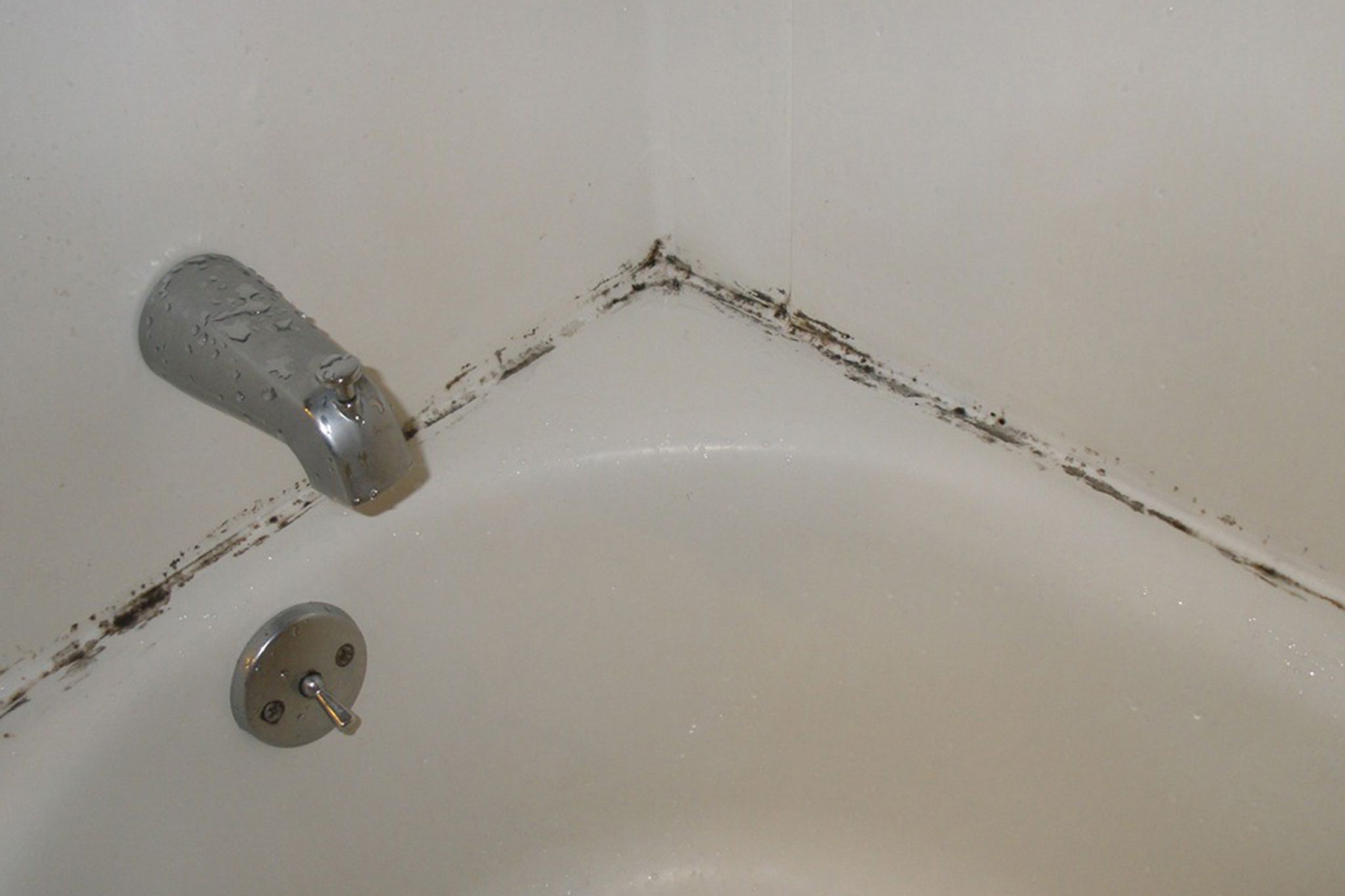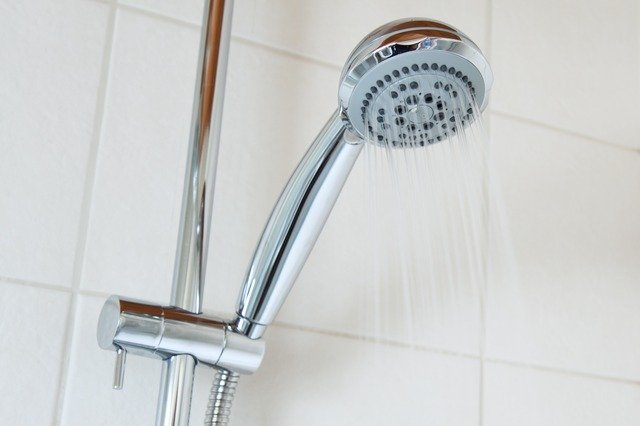Mold on shower curtains? Here’s how to stop it for good! If you've ever stepped into your shower only to be greeted by the unsightly sight of mold creeping across your curtain, you're not alone. This common household nuisance can not only ruin the aesthetic of your bathroom but can also pose health risks. In this guide, I will share my insights and proven strategies for tackling mold on shower curtains effectively, ensuring your bathroom remains a clean and inviting space. So, let's dive into the world of mold prevention and discover how to keep your shower curtains fresh and mold-free!

Source: www.wikihow.com
Table of Contents
Understanding Mold and Its Causes
Before we jump into solutions, it’s essential to understand what mold is and why it loves to thrive in our bathrooms. Mold is a type of fungus that grows in moist environments. It reproduces by releasing tiny spores into the air, which can settle on surfaces and begin to grow when conditions are right.
The Perfect Environment for Mold
Bathrooms are a perfect breeding ground for mold due to the following factors:
- Humidity: Showers produce a lot of steam, creating a humid environment.
- Lack of Airflow: Many bathrooms have limited ventilation, which prevents moisture from escaping.
- Organic Material: Mold feeds on organic materials, and shower curtains, especially those made from fabric, can provide an ideal food source.
Understanding these factors is the first step in preventing mold from taking hold on your shower curtains.
The Health Risks of Mold Exposure
Mold isn't just an eyesore; it can also pose health risks. According to the Centers for Disease Control and Prevention (CDC), exposure to mold can cause a range of health issues, especially for individuals with allergies, asthma, or weakened immune systems. Common symptoms include:
- Nasal congestion
- Coughing
- Sneezing
- Skin irritation
- Eye irritation
In severe cases, prolonged exposure can lead to more serious respiratory issues. Therefore, addressing mold on shower curtains is not just about aesthetics; it’s about safeguarding your health.
Simple Tips to Prevent Mold Growth
Now that we understand the problem, let’s explore actionable steps to prevent mold on shower curtains for good.
1. Choose the Right Curtain Material
One of the easiest ways to combat mold is to choose shower curtains made from mold-resistant materials. Look for curtains made from:
- Vinyl: This material is waterproof and easy to clean.
- Polyester: Many polyester curtains are treated to resist mold.
- Nylon: This is another synthetic option that tends to resist moisture.
By selecting the right material, you can significantly reduce the likelihood of mold growth.
2. Ensure Proper Ventilation
Good airflow is crucial in preventing mold. Here are some ways to improve ventilation in your bathroom:
- Use an Exhaust Fan: Turn on the fan before and after your shower to help remove excess moisture.
- Open Windows: If possible, open windows during and after showers to allow fresh air to circulate.
- Keep Doors Open: Leave the bathroom door open after showering to promote airflow.
Implementing these tips can help lower humidity levels and create an inhospitable environment for mold.
3. Regular Cleaning
Regular cleaning is vital for keeping your shower curtains mold-free. I recommend the following cleaning routine:
- Weekly Wipe Down: After each shower, use a squeegee to remove excess water from the curtain.
- Monthly Deep Clean: Wash the curtains monthly. For machine-washable curtains, use hot water and a mild detergent. For non-washable curtains, a mixture of vinegar and water can work wonders.
4. Use Vinegar and Baking Soda
Vinegar and baking soda are natural mold-fighting agents. Here’s how to use them:
- Vinegar Spray: Mix equal parts of water and white vinegar in a spray bottle. Spray the curtain and let it sit for 30 minutes before rinsing. The acidity of vinegar kills mold spores.
- Baking Soda Paste: For tougher stains, create a paste using baking soda and water. Apply it to the affected area, let it sit for 15 minutes, and scrub gently before rinsing.
These natural solutions are effective, eco-friendly, and affordable.
5. Keep the Bathroom Dry
After showering, take a few moments to keep the bathroom dry. Here’s how:
- Wipe Down Surfaces: Use a towel to dry off any wet surfaces, including the shower curtain.
- Hang the Curtain Open: After use, hang the curtain so it can dry completely. Avoid letting it stay bunched up, as this retains moisture.
These small actions can make a significant difference in preventing mold growth.
Dealing with Existing Mold
If you already have mold on your shower curtain, don’t panic! Here’s a step-by-step guide to effectively remove it.
Step 1: Identify the Type of Curtain
Before you start cleaning, check the care label on your shower curtain. This will guide you on the best cleaning methods to use.
Step 2: Gather Your Supplies
You’ll need the following supplies:
- White vinegar
- Baking soda
- A sponge or soft brush
- A spray bottle
- A washing machine (if applicable)
Step 3: Treat the Mold
For Machine-Washable Curtains
- Pre-Treat: Spray the affected areas with a mixture of vinegar and water. Let it sit for 30 minutes.
- Wash: Place the curtain in the washing machine with hot water and detergent. Add a cup of baking soda for extra cleaning power.
- Dry: Hang the curtain to dry completely.
For Non-Washable Curtains
- Spray: Use the vinegar solution to spray the moldy areas.
- Scrub: Gently scrub with a sponge or brush. Rinse thoroughly with water.
- Dry: Ensure the curtain is hung up to dry completely.
Step 4: Regular Maintenance
Once you've removed the mold, follow the prevention tips mentioned earlier to keep it from returning.
Frequently Asked Questions About Mold on Shower Curtains
What causes mold to grow on shower curtains?
Mold thrives in humid environments, making bathrooms the perfect breeding ground. Factors such as poor ventilation, moisture, and organic materials contribute to mold growth on shower curtains.
How can I tell if my shower curtain is moldy?
You may notice dark stains or spots on the curtain, a musty smell, or visible mold growth. Regularly inspecting your shower curtain can help you catch mold early.
Can I use bleach to remove mold?
While bleach can kill mold, it may not be the best option for shower curtains, especially fabric ones. Bleach can damage the material and may not remove mold stains effectively. Instead, opt for vinegar or baking soda.
How often should I clean my shower curtain?
I recommend cleaning your shower curtain at least once a month. However, if you notice mold or mildew, clean it immediately.
What are the best materials for mold-resistant shower curtains?
Look for shower curtains made from vinyl, polyester, or nylon, as these materials tend to resist moisture and mold growth effectively.

Source: www.houselogic.com
Conclusion
Mold on shower curtains is a common issue, but it doesn’t have to be a permanent one. By understanding the causes of mold and implementing effective prevention and cleaning strategies, you can keep your shower curtains fresh and inviting. Remember to choose the right materials, ensure proper ventilation, and maintain a regular cleaning routine.
Take action today! Start by checking your shower curtain for mold and implement these tips to keep your bathroom mold-free. If you found this guide helpful, don’t hesitate to explore additional resources or leave a comment below.
Watch This Video on Mold on Shower Curtains? Here’s How to Stop It for Good
With a little effort and attention, you can enjoy a clean, healthy bathroom environment for yourself and your loved ones.






